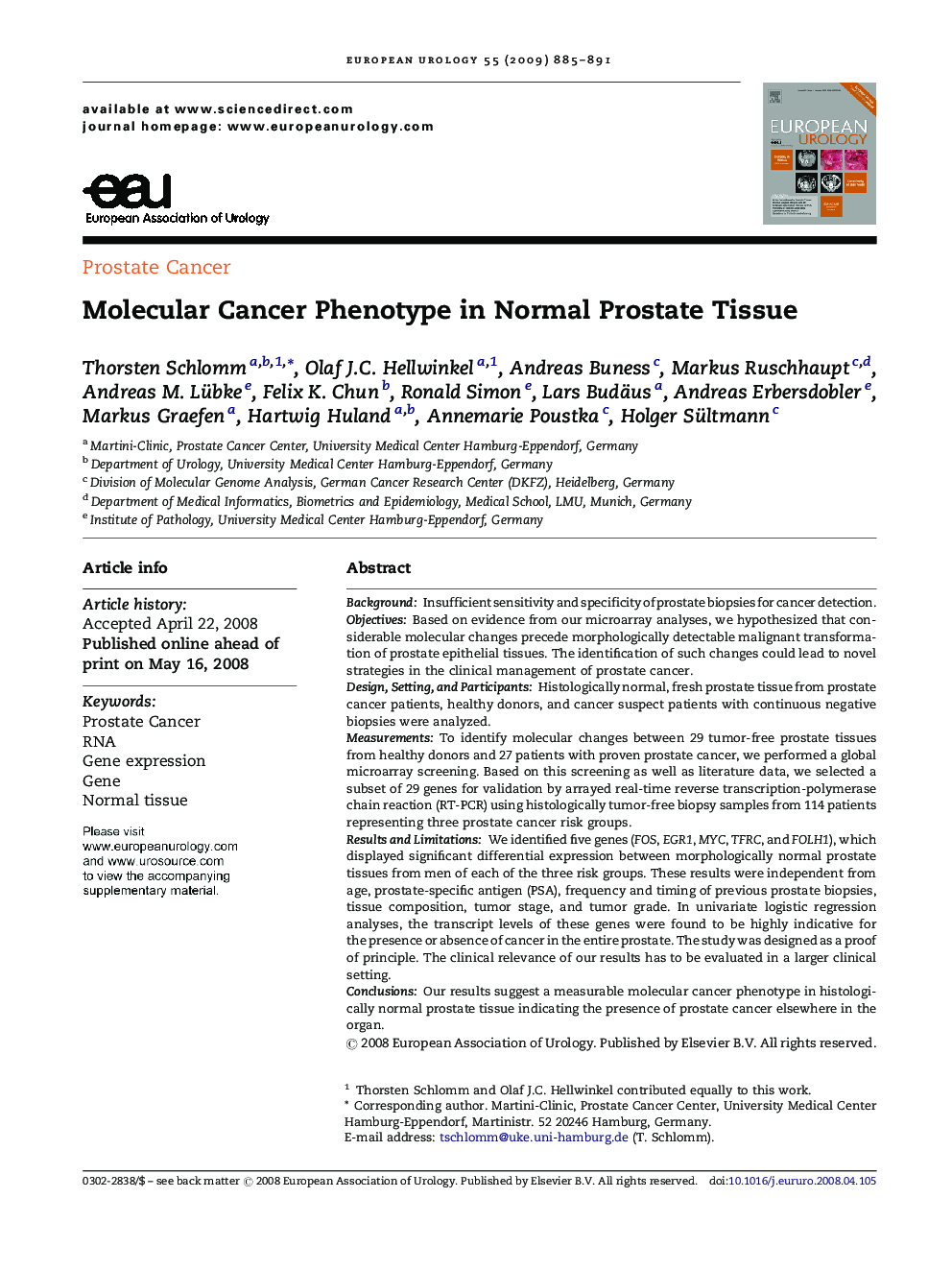| Article ID | Journal | Published Year | Pages | File Type |
|---|---|---|---|---|
| 3928418 | European Urology | 2009 | 7 Pages |
BackgroundInsufficient sensitivity and specificity of prostate biopsies for cancer detection.ObjectivesBased on evidence from our microarray analyses, we hypothesized that considerable molecular changes precede morphologically detectable malignant transformation of prostate epithelial tissues. The identification of such changes could lead to novel strategies in the clinical management of prostate cancer.Design, Setting, and ParticipantsHistologically normal, fresh prostate tissue from prostate cancer patients, healthy donors, and cancer suspect patients with continuous negative biopsies were analyzed.MeasurementsTo identify molecular changes between 29 tumor-free prostate tissues from healthy donors and 27 patients with proven prostate cancer, we performed a global microarray screening. Based on this screening as well as literature data, we selected a subset of 29 genes for validation by arrayed real-time reverse transcription-polymerase chain reaction (RT-PCR) using histologically tumor-free biopsy samples from 114 patients representing three prostate cancer risk groups.Results and LimitationsWe identified five genes (FOS, EGR1, MYC, TFRC, and FOLH1), which displayed significant differential expression between morphologically normal prostate tissues from men of each of the three risk groups. These results were independent from age, prostate-specific antigen (PSA), frequency and timing of previous prostate biopsies, tissue composition, tumor stage, and tumor grade. In univariate logistic regression analyses, the transcript levels of these genes were found to be highly indicative for the presence or absence of cancer in the entire prostate. The study was designed as a proof of principle. The clinical relevance of our results has to be evaluated in a larger clinical setting.ConclusionsOur results suggest a measurable molecular cancer phenotype in histologically normal prostate tissue indicating the presence of prostate cancer elsewhere in the organ.
